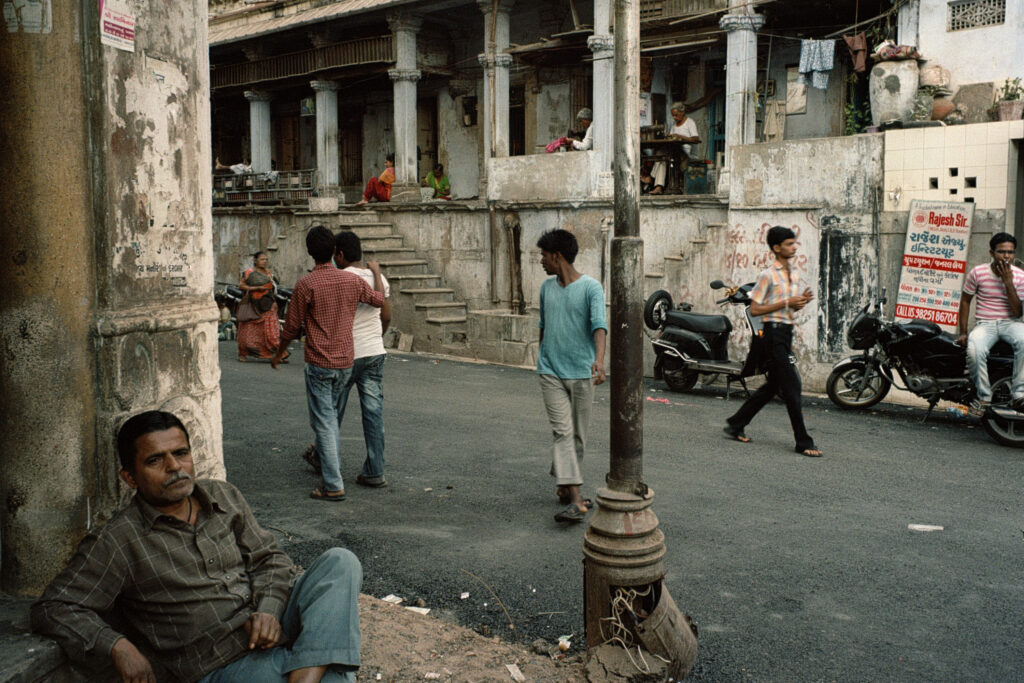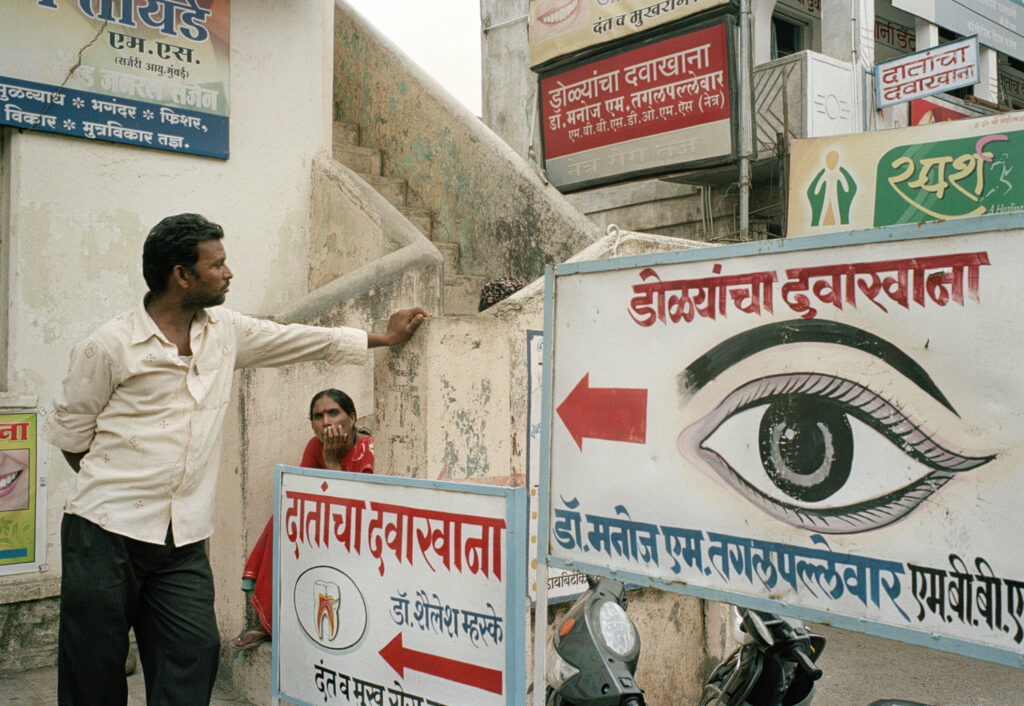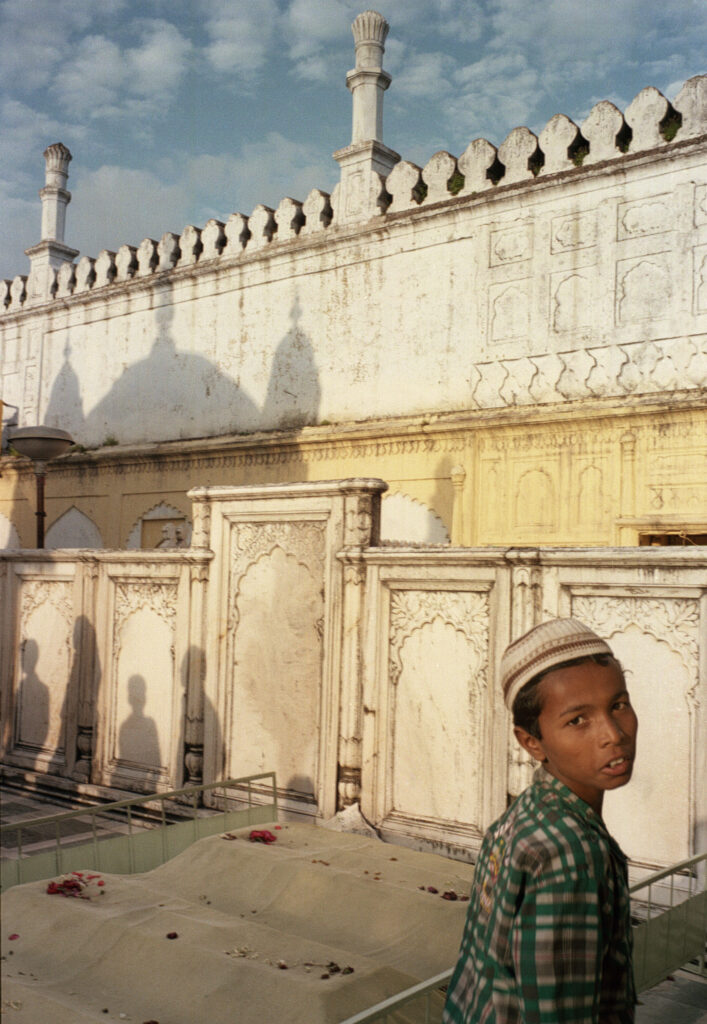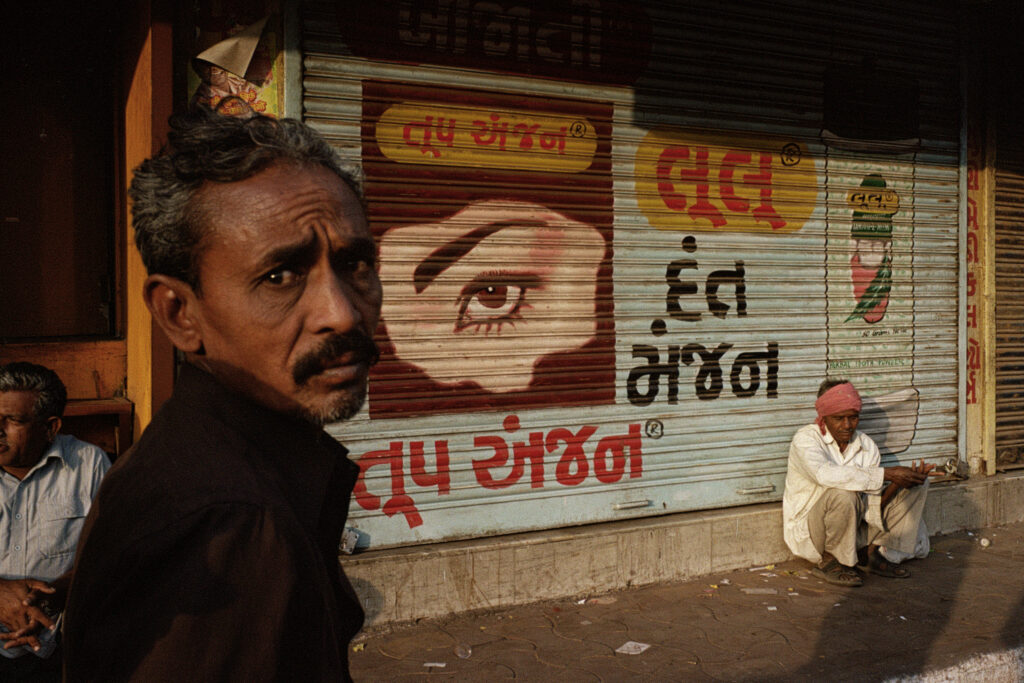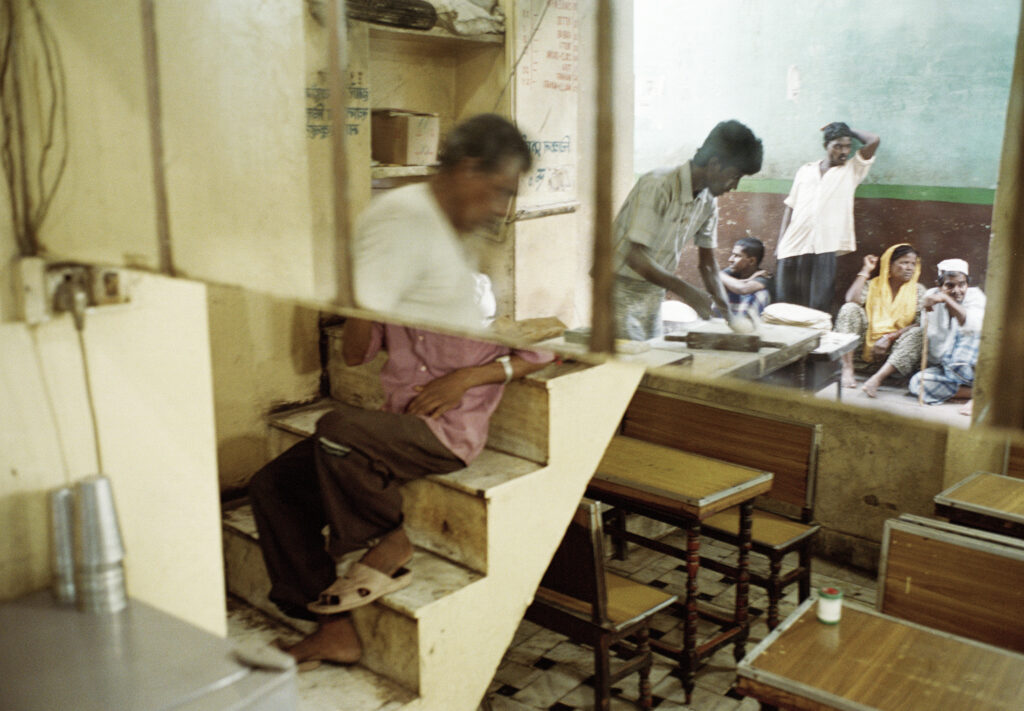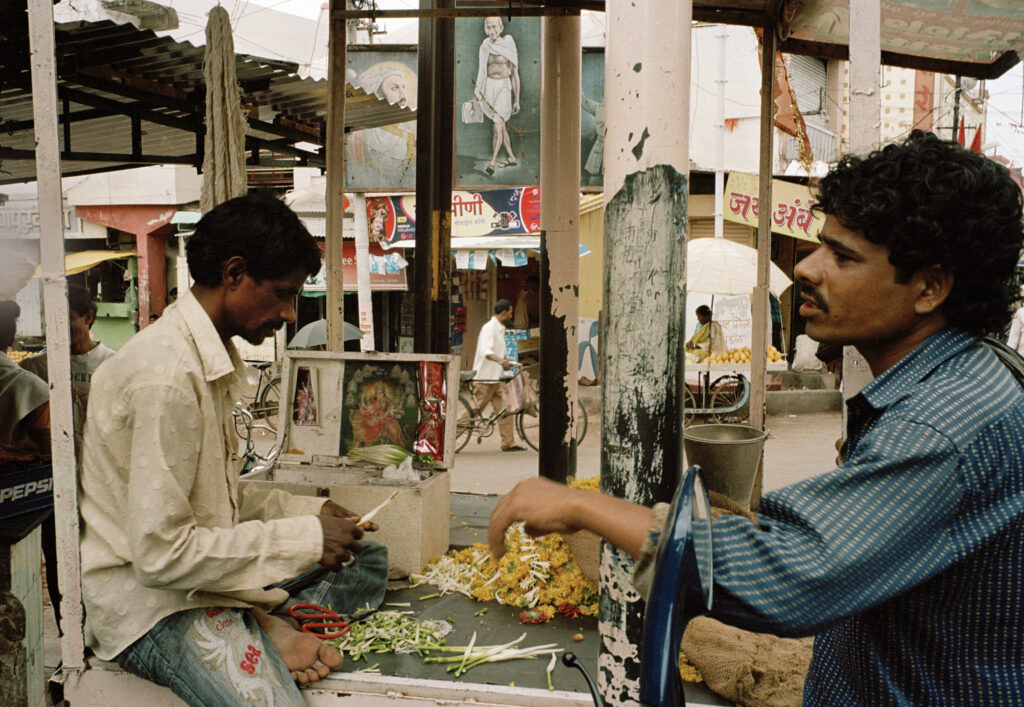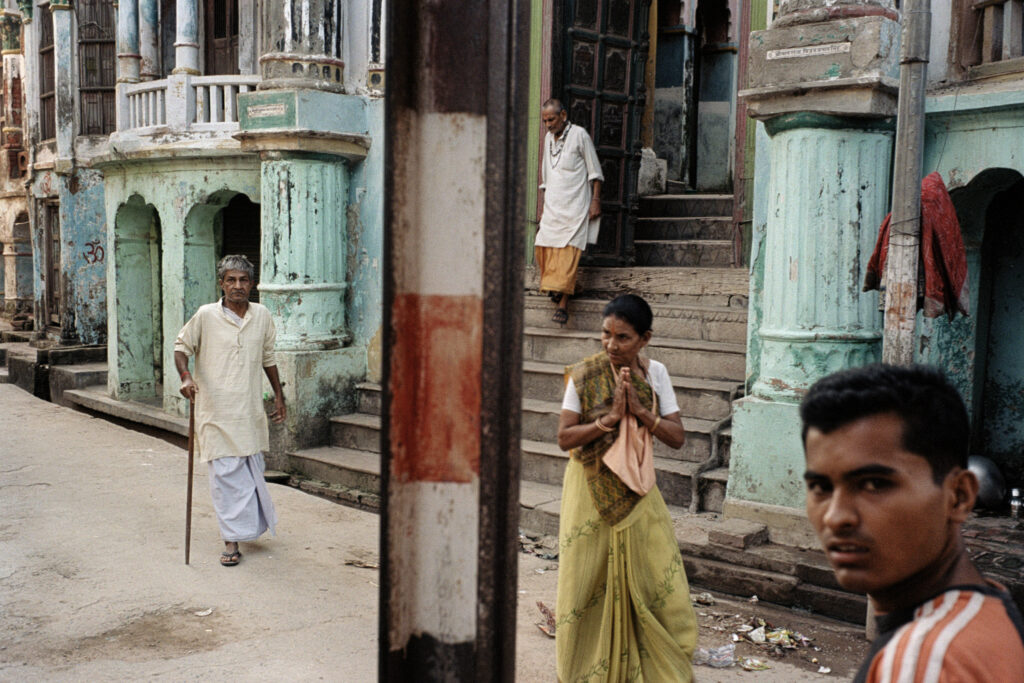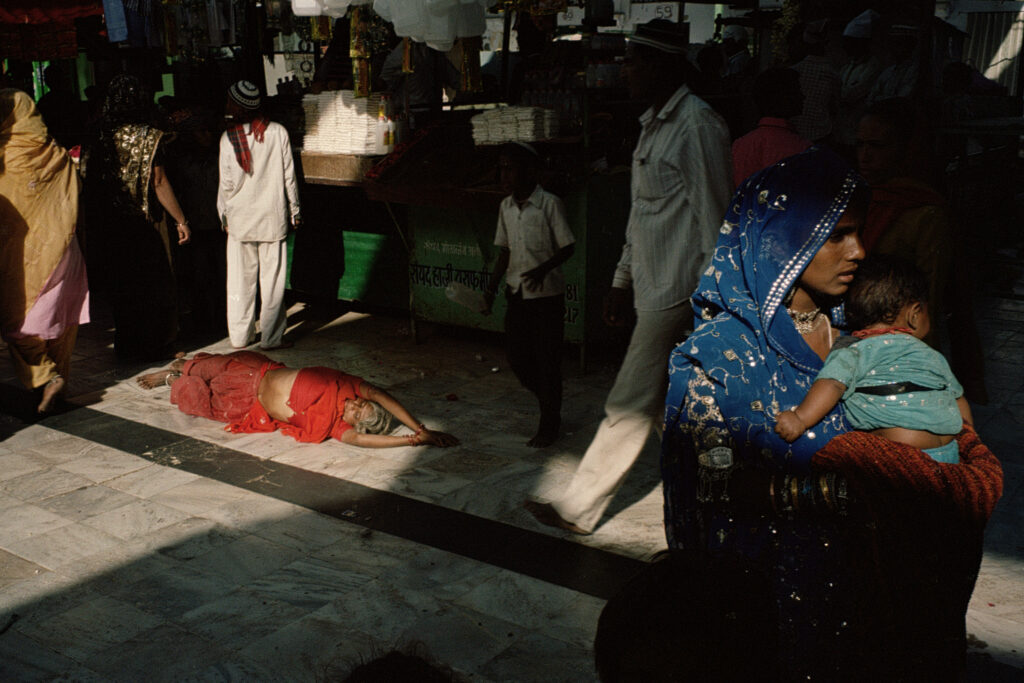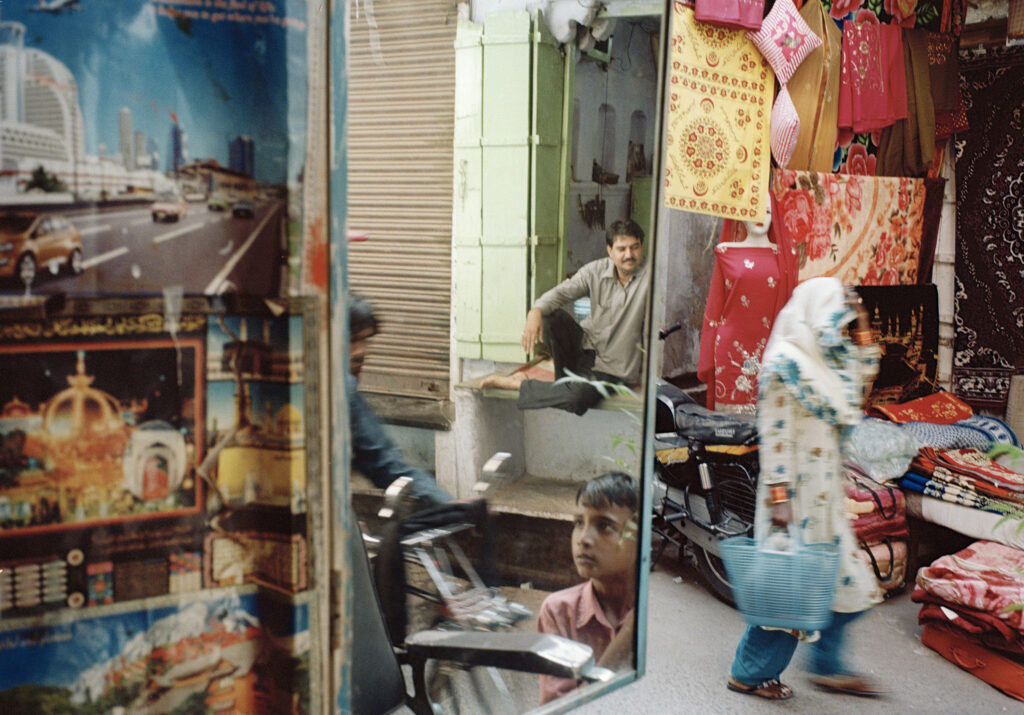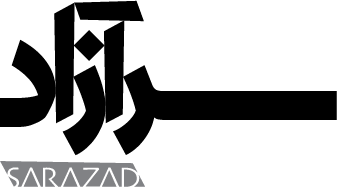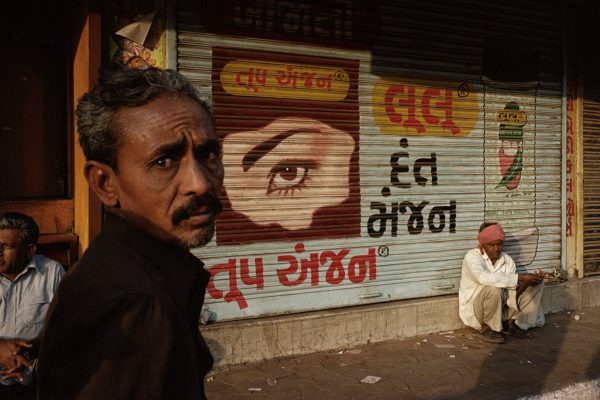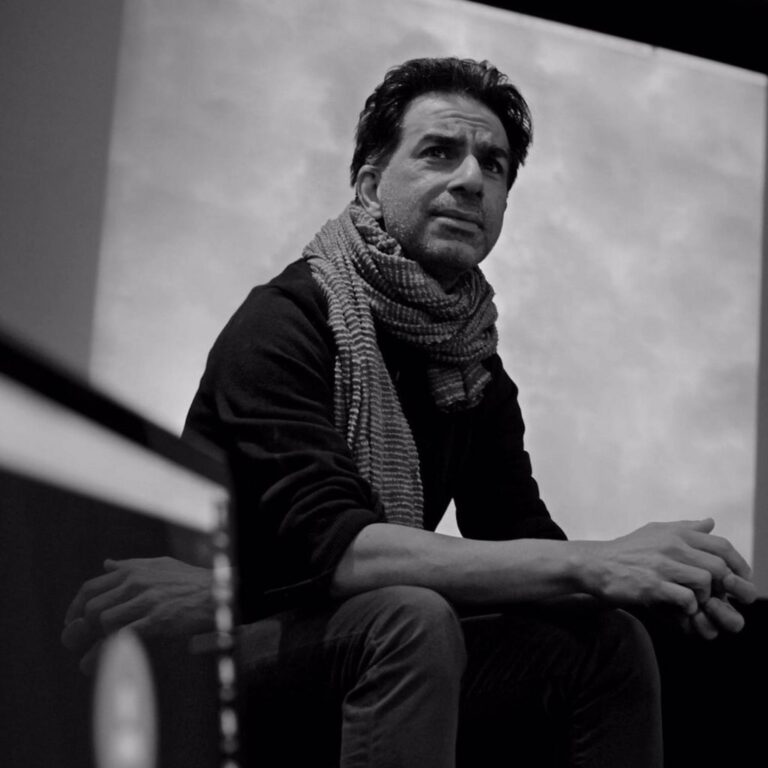An Interview with Asim Rafiqui
Born and raised in Karachi, Asim Rafiqui is an independent photographer, writer, and researcher who provides a critical examination of his previous role as a mainstream media reporter. His work can be perceived as a critique of politics of representation in news photography and what is often termed humanitarian journalism – a form of photography that purports to seek reform yet conceals many explicit and implicit forms of suppression. Asim believes that to uncover these aspects truly one must look beyond the photo frame and position the image within its actual context: the media production value chain and the political economy of news.
He challenges the approach of utilising broad categories and pre-existing notions to comprehend intricate issues, labelling it as perilous. This is a characteristic of Western journalists working in non-Western regions. These generalised explanations often impose biased and predominantly suppressive judgments on others’ lives without consideration of the day-to-day experiences of the people involved. However, in Asim’s perspective, the world is not merely the “dead effect” of totalizing social systems. Instead, he sees it as an animated, varied, and fascinating place that merits our attention. Having once been part of the mainstream journalism mechanism, he now presents his experience of the world by scrutinizing the practices of photojournalism as well as by his extensive visual documentary projects. His aim, however, is not to comprehend, explain, or analyse the world as he believes these modes of understanding to be yet another form of oppression which try to confine the ever-changing life around us to manageable, often linear narratives. He rather aims to view the world as a series of encounters, surprises, mistakes, accidents, and events reflecting life’s true essence.
Asim is pursuing a PhD in Social Anthropology at TUDelft, Netherlands. His work has been featured in publications such as Newsweek, Time, Harper’s, Stern, Critique, and National Geographic (France). He embarked on his career in 2003, producing long-term works from locations such as Pakistan, India, the West Bank, Gaza, and Haiti. Asim relocated to New York in 1984 to study engineering and later earned his MBA from Columbia Business School. His career and personal life have led to a nomadic existence, with cities like New York, Los Angeles, Boston, Lahore, London, Munich, Bangkok, Delhi, Stockholm, and Kigali serving as his home over the past fifteen years. He is currently residing in Gwadar, Pakistan.
Sarazad: You have been working as a photographer in photojournalism. However, your position about the general notion of representation carries a strong critical perspective that brings forward the multiplicity and intersection between the global south geography and politics of representation. How did you reach this state of mind and criticality?
AR: Journalism, and its derivative discipline of photojournalism, rely on a number of myths. The myth of objectivity, neutrality, balance, giving ‘voice to the voiceless,’ and ‘speaking truth to power’ are among the most obvious, tiresome, and frequently regurgitated by journalists. No one is more committed to the perpetuation and propagation of these myths, and hence obfuscation of the reality of the commercial and political influences that determine the course and interests of journalism than journalists themselves. Even those who claim to critique journalism often do so by arguing that journalism is fundamentally a just and fair practice, and if and when there are failures, which these days seem to happen almost daily, then those are not only merely anomalies but easily fixed through some ‘reform’ program.
But it does not take long for one to quickly understand that none of these myths holds any credence. There are many in the industry who know exactly what they are doing and understand well that their work is not neutral, or balanced, or even objective, but they choose to say nothing. Some do it for personal career reasons, others do it because it is convenient to never rock the boat, and many do it because they cannot be bothered to think beyond their individual practice of the craft.
When I started in this business, I was a believer in the myths of photojournalism and the publicly stated ideals of its practice. But 9/11 put the spotlight on the thin veneer of ethics and ideals that were thought to inform journalism. Just as 9/11 undid the moral compass of so many of the West’s writers, artists, intellectuals, academics and citizens, our journalists, photographers and editors too were quickly swayed towards jingoism, nationalism, patriotism, Western ethnocentrism, Christian moralism and worse. I unfortunately, or perhaps fortunately, entered the industry in the wake of the 9/11 attacks. I also unfortunately, or fortunately, depending on how I tell this story, entered the industry at a time when it was undergoing radical structural transformations. The entire political economy of the media was in free fall and the 1990s and 2000s saw a whole world of presumptions and assumptions about the management, operations, practices, method and goals of journalism change. These two factors combined to make a gloriously unhinged mess of journalism, the results of which have bought US news media to the comic theatre it has become today. Many could see the changes happening, but said nothing. I just decided to write about it and started a blog about the shenanigans of photojournalists. It was a time of near complete compliance with US imperial interests, US exceptionalism, the immorality of the so-called “war on terror,” and the silent support for the genocidal slaughter of Afghans, Iraqis, and Pakistanis considered “necessary to kill.”
Men and women I once admired reduced themselves to becoming court jesters and couriers, gleefully embedding with US military forces and bringing back “approved” stories and military curated images to help cleanse US war crimes and crimes against humanity for a compliant and numbed US audience. Many went on to win accolades at the most prestigious festivals and were handed many so-called journalism awards. Throughout the slaughter of innocents, and the displacement of millions of Arabs, the self-proclaimed photojournalism’s messiahs of human moral concern, the self-congratulating “witness to human suffer,” those who once proclaimed “never again,” remained silent. Most remained complicit in white-washing the genocidal madness. They knew, could see what was happening, and were aware of the bias and prejudice that a new kind of new reporting in the wake of 9/11 was based on, but instead of speaking out, they decided that they had to participate. Many probably did so because they needed the work, but I also believe that many did so because they ideologically believed in the right of the US to kill and murder. They were committed to helping bend the world to the will of US power and gleefully cheered it on, and produced the stories and the lies that would help do it.
I had a front seat to this theatre of the absurd. It was near impossible not to speak about it.
Sarazad: Is this the point of departure of your critical writing? Perhaps the notion of critical self-reflexivity could be brought here, the relationship between the micro and macro.
AR: We are too quick to reach for totalizing and essentialist narratives. Too often we see the world as merely a reflection of our preconceived epistemic and categorical definitions. It describes its objects as if they are fixed, predictable and operating under the control of powerful, sweeping totalities like neoliberalism, terrorism, communism, globalization or any other -isms that it deems relevant to the moment. This particular habit of using the macro to explain and see the micro is particularly insidious when Western journalists operate outside of the West, where very little if no thinking from the ground takes places and instead a series of reductive conventions, clichés, abstractions and categories are used to ‘snap’ the world into well-known categorical explanations. It is as if all they need to do is document the consequences and effects of various abstract logics and essentialist social models, and to read the lived world as little more than a result of these logics and models. All singularity, specificity, particularly and hence, all complexity of lived life is lost, and the gorgeous complexity of the ordinary, conducted by each and every individual living, improvising, negotiating, expressing and creating, is lost. But the world is not ready made, or even off-the-shelf and just waiting for us to arrive and simply document and/or record it. Journalism’s habit of seeing the world through fixed categories– refugee, migrant, terrorist, Muslim, Islamic, radical, poor, liberal, Taliban, the list is endless– is a form of laziness that is a form of unthinking. It is a laziness that allows it to avoid learning from the messiness of lived life which is in reality a series of multiple precisions, not rigid essentialisms.
We– those of us outside of the white West– are more likely to be explained through totalities (terrorism, Islamic radicalism, poverty, migration, under-development etc.) which are then used as ‘explainers’ of behavior and practice. I use the word ‘white’ here in the literal sense because the inside of ‘objective’ journalism and photojournalism is still largely white, male and Anglo-Saxon. This is the foundation of ‘objectivity’ and the voices that can be deemed as ‘balanced,’ or ‘neutral’ or without bias. I have written about this very specific, situated nature of the idea of ‘objectivity,’ which of course builds on the arguments of feminist thinkers in science studies, anthropology, sociology and other disciplines. The voices Sandra Harding, Donna Haraway, Audre Lorde, Sara Ahmed and others echo through my arguments. So whereas we are explained through rigid totalizing frames, the Western white world is almost always explained through particularity and individuality. When it comes to their own communities, journalism manages to find the messiness of existence.
Sarazad: It seems that the alternative against these ready-made narratives already exists in the banality of everyday life within our darker nations? The necessity to look at the micro level of life.
AR: Most of my work in Pakistan, particularly the work I began in 2012 on the law in Pakistan, is a search for ways of working, writing, photographing and speaking that avoid the comfortable unthoughtfulness. I started this project in 2012 and I usually describe it as an ethnography of the law. Titled Law & Disorder: A People’s History of the Law in Pakistan, it explored how different laws and the changes made to them over the decades were experienced, negotiated and felt by the citizens of the country. Rather than merely documenting the already-known– the courts, police, the panchayats, the paralegal institutions, etc.– I became interested in the lived consequences and traces of the law and the complexity, creativity, energy, and expressivity with which it was faced by ordinary people. I want to understand the messiness of life itself, and do so in its particularity because it is the only way to understand how people pull themselves to life, to create a present, and negotiate their way through it. But this is hard work and it takes time. As I also mentioned earlier, the idea was to shun a totalizing, already-known, ready-made conception of the world, and to explore its lived ordinariness, tracing within this the ways in which distance forces e.g. legislation or legal judgements, are felt, experienced, negotiated, survived and suffered.
As I argued previously, I am suspicious of totalizing explanations that are really conclusions even before we have begun. They distort our ability to see how life in the ordinary is a moving, shifting and complex form of composition and that the reliance on an off-the-shelf view of society (liberal, Marxist, Islamic, etc.) may be good for living room conversations and newspaper op-eds, but it tells us next to nothing about how these forces, which I am not denying or ignoring, are actually felt, negotiated, understood, manipulated, confronted, and suffered in daily life. For me personally, this adherence to convenient, ready-made frames is a form of intellectual laziness, an all-too-easy means to unthinking the world that we see and experience around it. It is also a form of cowardice because it allows us to remain aloof and apart from being challenged by those we may judge to be “lesser”– and here I mean poorer, rural, illiterate (by modern education standards), traditional, etc. It allows us to judge, pontificate, analyze, comment, advise and theorize without having to confront ourselves and the epistemic prejudices we bring into their lives. It also prevents us from understanding a lived reality, with its social, cultural, political, familial, individual limits and constraints. My experiments have had mixed results, but I continue to search for ways to tell our stories in ways that defy the ready-made explanations of sweeping essentialist frameworks (neoliberalism, globalization, development, militarism, radicalism modernity, etc.) and instead look to reveal the magic, and magnificence of the daily ordinary. This is not to deny the existence of these forces, but to understand and know how they become part of ordinary life requires work, and an openness to lived experience. The world is not, as Kathleen Stewart (whose arguments and words echo in my answer above) reminds us, merely the “dead effect” of totalizing forces and systems. It is a far livelier, varied and magical place that demands our attention. We have to swim in it to even begin to understand the ways in which people live through and make the present.
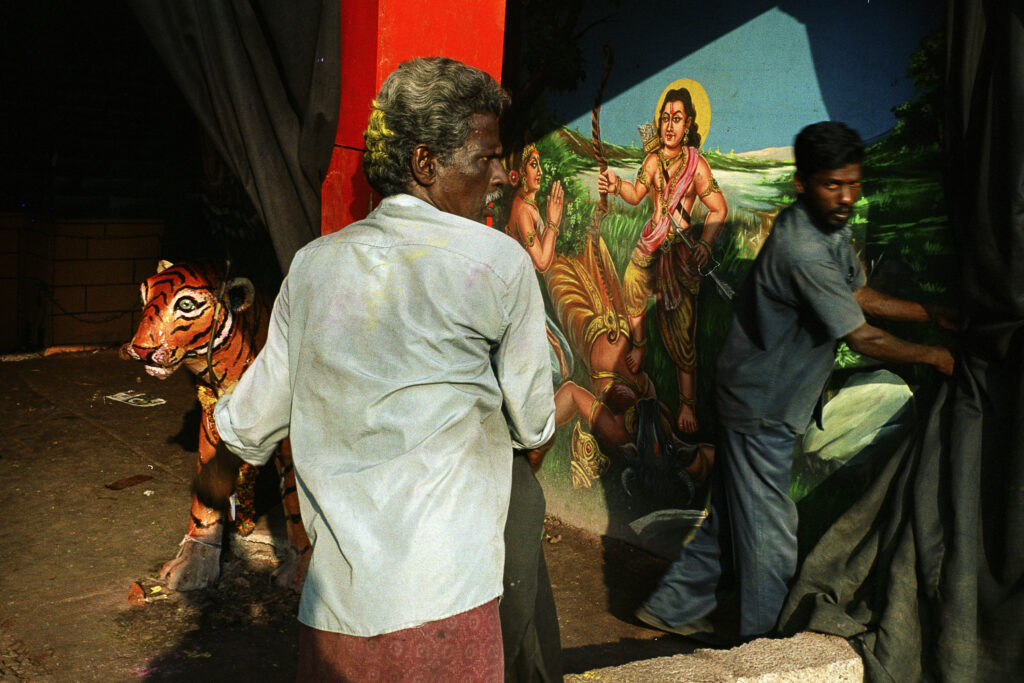
Sarazad: When we talk about the problem of journalism in that sense, you’re talking about the issue of journalism concerning human rights or humanitarian journalism. From our point of view, the notion of visualization and representation from journalism to contemporary art fundamentally suffers from the same form of political problem. Do you think the problem belongs to documentary practice?
AR: Every time I am asked this question, or one similar to it, my mind wanders back to Ben Davis’ book 9.5 Theses on Art and Class where he unpacked the political economy of the art world, and its deep and intrinsic relation to capitalism. It was the sort of analysis (also found in works like Brian O’Doherty’s White Cube: The Ideology of the Gallery Space) that helped me understand the political economy of the news, and bought me to the writings of people like Russel Baker, Michael Massing and others who were writing about the structural and institutional underpinnings of journalism and the tectonic shifts taking place through the late-1990s and early 2000s that were fundamentally changing the way we produced and understood journalism. Ben Davis’ work reveals the world of art and the forces driving its priorities, interests, celebrities and society. It is a materialist account of what otherwise is imagined as only ‘art,’ bringing into view why we see and note what we see and note in the modern art world.
Photojournalism has been particularly resistant to such analysis not the least because of the way photo critics, editors and photographers themselves idealize the photo itself, amputating and isolating it from the political, economic, capitalist, market and profit forces that inform it. Curators, academics, editors, commentators and photojournalists have played a leading role in obfuscating the material conditions of documentary and photojournalism, veiling the way politics, profit and propaganda influence so much of what passes for ‘news’ and ‘documentary’ photojournalism. I would even add that many grand photography festivals and events also contribute to this powerful obfuscation as overt and explicit commercial interests (photo agencies, photo collectives, corporate photography equipment manufacturers, global wire news agencies, news publications and others) that help fund these festivals carefully edit out debates, exhibitions, discussions and presentations. Instead, the ‘individual’ photographer is placed center-stage, her images and words gracing the walls of elaborate and exquisite medieval sites which usually host such events, suggesting to the spectators a world made and shown through the eyes of a lone moral and crusading voice.
But, neither the photograph nor the photographer stands outside the political economy of the news. There are not individual ‘witnesses’ to injustice operating outside the priorities, prejudices, proclivities, biases, politics and profits of corporate news media. What is shown and seen is a consequence of specific political interests and agendas. We saw this when US photojournalists gleefully embedded with US military forces preparing to invade Iraq, and yet again more recently the sheer unthoughtfulness with which US photojournalists repeated US political propaganda in their ‘humanist’ and ‘humanitarian’ photo stories from Ukraine. We cannot ignore the simple fact that photographers in the US are commissioned and employed by publications that are deeply connected to US political power. Certainly publications like the magazine Time and the newspaper The New York Times have repeatedly demonstrated their allegiance to US imperial interests. You can look across the spectrum of US media and find how US imperial and military goals are laundered as news on almost a daily basis. I will not even mention the powerful influence of corporate interests, capitalist ideology and profit motives that define what is commissioned, and published.
To all of this is added the sweet sounding but empty moral and humanist bromides uttered individual writers and photojournalists themselves. They spend hours framing their projects in ways to bamboozle us with their liberalism, humanitarianism, commitment to justice and law, and distract themselves and us from more banal priorities like careerism, ego, bravado, profit and self-aggrandizement. Once you start to see beyond the frame of the photograph, and place it back into its rightful place in the value chain of media production and the political economy of the news, things start to make more sense. You also start to see the naïveté of critics, editors, curators and others who refuse to permit the ugly and banal reality of the industry to stain their ‘reading’ of a photograph. They prefer to idealize and fetishize the photograph by refusing to engage with the material conditions of its production. But the material conditions are the only real objective truth a photograph can offer– the organizations that commission, produce, publish and exhibit a photograph are the only real objective fact we can discern when we look at a photograph. A photo’s truth begins with its level of ‘seeing,’ and it is only after this that we can even begin to understand what is presented in the photo itself. Otherwise it is all just fantasy informed by individual ideology, indoctrination and prejudice.
Sarazad: The distinction between mainly economic structures and moral intention brings to mind an expression in Persian, namely, var nam nahadan, which means to murder somebody, bury their body, then grow flowers over the body to conceal it. Despite your self-criticism and self-reflexivity about the economic structure within the condition of representation of others, you mainly talk about white western photographers; how do you see the role of, let’s call them, native informants in this system?
AR: Wael Hallaq repeatedly reminds us that the West is “A culture and epistemology, not a geographical place.” We are all epistemically and culturally Western, and the very concept of ‘the native’ or ‘local’ or even ‘Indigenous’ that stands outside the epistemic formations of Western knowledge form is seriously questionable. David Scott, Joseph Massad, Laura Ann Stoler and many others remind us of the ways even our idea of ‘our culture,’ and ‘our traditions’ that so many so-called decolonial thinkers attempt to excavate, leaves us trapped in forms, objects, categories and concepts informed and defined by colonial epistemologies.
As I argued earlier, post-coloniality often appears to me as a false victory. There is really no escaping from Western epistemic relations which are daily cemented to remain in place through the powerful glue of capitalist production and its influence on the organization and operations of government, society and family. Accepting this continuing privileging and power of Western knowledge forms, and their near universality helps explain why we see the world through some very shallow and limited lenses. We only always see the world through Western eyes, interests and values. This places severe limits on what a young photographer, writer, journalist, artist, filmmaker from ‘the rest of the world’ can and is able to do if s/he wants to pursue mainstream and broad ‘success.’ The global Other is best heard and comprehended when she espouses the doctrines of US imperialism, celebrates US exceptionalism and insists that she is an adherent of the myths of western liberalism. That is what helps get you into the corridors of Western media head-offices and onto the pages of its publications, or interviews in its primetime studios. The West is immanent to South Asia, and the very ideas of ‘here’ and ‘there,’ native or foreign, are highly questionable. They give credence to Western prejudices and help justify its insistence on speaking to us through a violent, racist, denigrating, patronizing and infantilizing discourse. They provide the very fodder that feeds the West’s sense of its social, cultural, political, economic, technological superiority as a place and a people. They entrench the inequality of thought, knowledge, wisdom, ideas and insight that defines the geographical West’s relations with the rest.
If you are a young journalist and you want to make money, you have to turn to Western publications and outlets. They remain the most powerful, influential, financially committed and are able to pay at rates that allow people to make a living. To say nothing about the status and prestige that is still bestowed to Western publications by those of us in the so-called global south. There is just no getting around this. As a result, there are only a handful of stories that ambitious journalists looking to be noticed by Western media can do, and obviously, these can only be stories that are entirely framed and presented through Western eyes, values, priorities, concerns and political interests. Over the years we have seen a veritable factory assembly line production of stories of vile nature of Muslim misogyny, the oppression of women under ‘Islam,’ terrorism and its innate presence in Muslim societies, the backwardness and underdevelopment of the Arab world, the inherent chaos and unmanageability of Islamic societies, etc. Again, as I said earlier, 9/11 bent the moral and intellectual compasses of our journalists, leaving them desperately in the search of more and more evidence of the mendacity, violence and unsuitability for ‘modernity’ of the Muslim and Islamic world. A corollary to this are stories that center the West and, particularly in the “under-developed” south, repeatedly create narratives that create a space for the White savior to intervene– militarily, economically, politically– and save the backwards other from themselves. Your choices are limited, but they are quite clear.
I think the most dangerous people in this are people like myself: educated in Western knowledge forms, and raised to consider it as the bastion of justice, equality, tolerance, civility, modernity, advancement and where all our ‘national’ histories must emulate and work towards. People like me– educated in Western style educational institutions at home or educated in the West itself at elite institutions– are the layer of Southern society that retains all political, economic, cultural, intellectual, and social power. We are Macaulay’s children, that “class of persons Indian in blood and color, but English in tastes, in opinions, in morals and in intellect,” and continue to play the role he envisioned for us. As a result, we remain the perpetuators of a coloniality that the West has conveniently labelled as ‘post-colonial.’
Hamid Dabashi, the American-Iranian intellectual and academic, has frequently written about this class, and referred to them as compradors. I am not too fond of the word comprador because it suggests a certain degree of conscious agency of collaboration and cooperation. I would argue that there is an unconscious desire and will to collaborate with the West because it leads to our being ‘heard’ and gives us a sense of relevance, authority and power to speak. But we are only heard because we are speaking the language of Western power, and as Spivak already argued, any other language (epistemically and politically speaking) would simply leave us mute.
But there is another aspect that we cannot ignore. I remain a critic of Western practitioners of journalism, but I understand why they produce the work that they do. What particularly irks me is why we are producing the works that we do and why we have narrowed our ideas of ‘the stories that matter’ to only those that we can sell to the West, along a Western epistemic frame, and with deeply Westernised eyes. And yet, I also know why this may happen. I know it because so many young journalists will simply say it. People in our countries cannot even make a decent living working as artists, journalists or photojournalists. These are not disciplines of capitalist worth, and our post-colonial horror show is underpinned by a crass rate-of-return thinking that is impatient with moral and social works. Young writers, journalists, photographers can only make a living writing and shooting for Western publications and delivering to the needs of Western editors. You cannot do that by producing local stories, and are inevitably trapped producing clichéd Western gibberish that they know will sell in Washington D. C and New York. We do not have a choice.
As I said, ‘the West’ is not a geography, but an epistemology. It is one we are taught from the day we enter our schools here in South Asia, but it is also one that is entrenched via financially powerful journalism institutions operating around the world. When I talk about Europe, I am not talking about Europe as geography; I am talking about Europe as a mindset, as an ideology, and as an epistemology. I am talking about this Europe that sits in Pakistan, Bangladesh in India, which in many ways is more violently defended here than I would argue even in Europe, and it has violent consequences. It does not need a white man to come here and brutalize our societies because we are doing it ourselves already here.
Sarazad: How do you think Eurocentrism as a normative subjectivity is related to the objectivity of journalism? Is there any connection here?
AR: I have touched this a bit above. But absolutely, Eurocentrism– the idea that Europe is the epitome of progress, tolerance, humanity, justice, equality, civility, storytelling, politics and power– raises it head in many different forms. It is the unacknowledged underpinning of racist attitudes that pervade so much of journalism’s discourses around migrants, Islam, development, waging war and more. It is also what allows journalists to see the entire world through strictly Western priorities, prejudices, interests, assumptions, habits and values and deem these as ‘universal’ or ‘normal.’ The representation of Western authoritarianism as ‘democracy’– Do I even need to mention racist, apartheid states such as Israel that are repeatedly and with complete normality referred to as ‘democracies’ or as ‘liberal’ societies– its highly corrupt legal institutions as ‘law,’ its terrifyingly racist societies as ‘civil society,’ its repeated penchant for war making and genocidal (which includes, just in the last two decades outright direct and not-so-direct-but-known involvement in mass slaughter in Pakistan, Afghanistan, Libya, Syria, Somalia, Iraq, Iran, Yemen and Palestine) destruction as ‘liberation,’ its growing inequalities and social pathologies as ‘globalization’ and more. Eurocentrism assumes that all this is right, modern, just, necessary, common sense, reasonable, normal and civil happens first in Europe, and then elsewhere. It holds that the rest of the world can only ever be Europe, if not now, then eventually, taken by seduction or force. It claims that the only history we see is that of other nations and peoples repeating Europe’s own. This form of historicism and prejudices sit at the back of so much of what passes for journalistic reporting.
Eurocentricity manifests in the society itself, and is of course what informs educational and legal systems. Globally it is entrenched through powerful transnational institutions like the UN, WTO, WHO, UNICEF and so on. Our discourses on development, progress, feminism, human rights, environmentalism, political economy (“The Economy”) and more are informed by Western ideals if not a near complete universalization of what are provincial European priorities and interests.
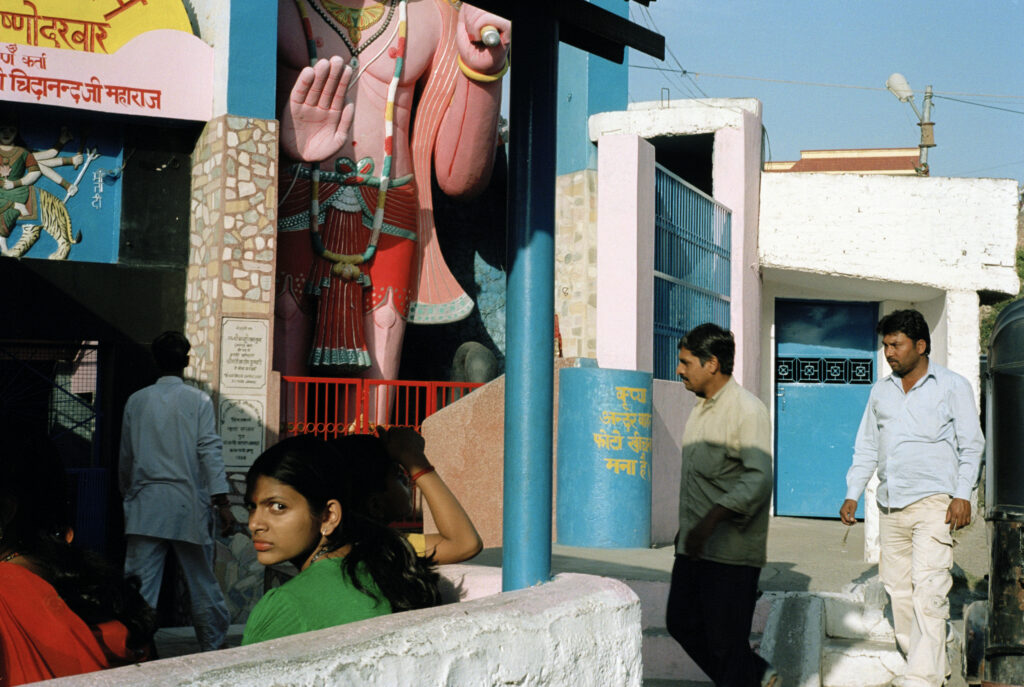
Sarazad: We are getting to the main question here. What is that alternativeness in your point of view, and how have you been practicing it in your field and teaching? How is it possible to challenge this normative way of thinking?
AR: I keep coming back to continuities of colonial epistemologies– in law, economics, education, governance, and ideas of progress/development– that continue to stain our present reality. We have imagined our anti-colonialism as something opposed to the repressive and oppressive structures of European colonial power, and failed to recognize the many ways in which we have maintained, if not further entrenched, the very institutional, ideological, epistemic and imaginative ideas colonial powers used to control us. I think Joseph Massad said it best when he reminded us that whereas anti-colonial nationalism was defined in opposition to colonial rule and its racist policies, it never questioned colonial modes of governance, law and education once independence had been achieved. These epistemic structures found their way into our newly independent nations, in the structure of governance, methods of policing, structure of national education, and nature of our legal institutions and ended up abdicating agency to them (see Joseph Massad’s book Colonial Effects: The Making of National Identity in Jordan).
Since 2008, when I started working on my own long-term visual documentary projects, I have been trying to experience the world not to understand it, explain it, or analyze it (forms of domination and mastery that work to mold life slipping past us into manageable, often linear narratives and ready-made categories), but as a series of encounters, surprises, mistakes, coincidences and happenstance that it actually is. I work against the need to organize life and experiences into grand explanatory narratives and theories, and to think with the daily ordinary and the way it carries within it the traces of larger forces (capitalism, colonialism, nationalism, etc.) but is never only constrained or defined by them. I try to see, feel and experience the world as an archipelago of encounters that do not line up, make sense or are connected and yet when seen together make up a map of the present, one that reveals the way the scars of the past, and the fears of tomorrow make the undefinable but complex present. I think most people can easily hear the voices of Lauren Berlant, Kathleen Stewart, and Manuel Delanda here which would be correct.
Teaching, then, becomes a practice of critically examining our ways of knowing the world, the categories and ontologies through which we recognize what constitutes an interesting object of study, the ways in which media and transnational discourses stain our way of speaking about the world around us and more. It becomes about personal transformation first as new epistemic relations are realized and explored, and new ways of being and engaging the social are experimented with. We push students to realize that it is not about “better” or “truer” representations, for all representations will inevitably be limited, but about a questioning of the self, and how the answers to those questions lie in the lives of the other (see Wael Hallaq for more on this, both in his work The Impossible State and also Restating Orientalism). It is a practice that requires humility and creative vulnerability. The outcomes can be remarkable.
Sarazad: Do you think academia could be a place for this alternative narrative? We witness a lot of the same criticism within academia.
AR: I want to believe that it may be the only place where these experiments do happen. It is one of the reasons why I left my professional work as a documentarian and returned to school to pursue a PhD. The idea was that this would give me room to experiment and to learn new ways of writing the world. Yet, I also see the deep contradictions in the evaluation and methodology of research degrees. There is no doubt that disciplines like anthropology have engaged in some remarkable and inspiring experiments in ethnography, writing, representation and pushing the boundaries of our onto-epistemic understanding of the world. Yet, I also find that it is often difficult to translate these experiments into your own research practice. The standardized research degree methodologies, writing formats, academic language and other formalities create considerable barriers against experimentation. How to write academically, the language to adopt, the jargon to rely on, the references– fashionable and otherwise [see Ellen Hertz’s hilarious paper “Pimp my fluff: A Thousand Plateaus and Other Theoretical Extravaganzas” for how fashion and jargon remain deeply important to academic posturing] continue to mitigate against alternatives ways of being, writing and revealing. But there is no doubt that it is the one place where such experiments can be tried, have to be tried and in fact are. They will not happen without a fight, but I do believe that at least the academy allows you to make an attempt, and find ways to get around the resistance.
The same cannot be said of corporate media and other institutions. The conventions, presumptions, prejudices, bias, beliefs, convictions and frankly, near fundamentalist worship of imperialism, capitalism, and white supremacy (aka Eurocentricity) are so deeply a part of the discourses, world views and irrational beliefs of journalists, editors and photographers that there is little chance any experimentation will even be entertained. And definitely not from those of us who stand outside these three frames.
